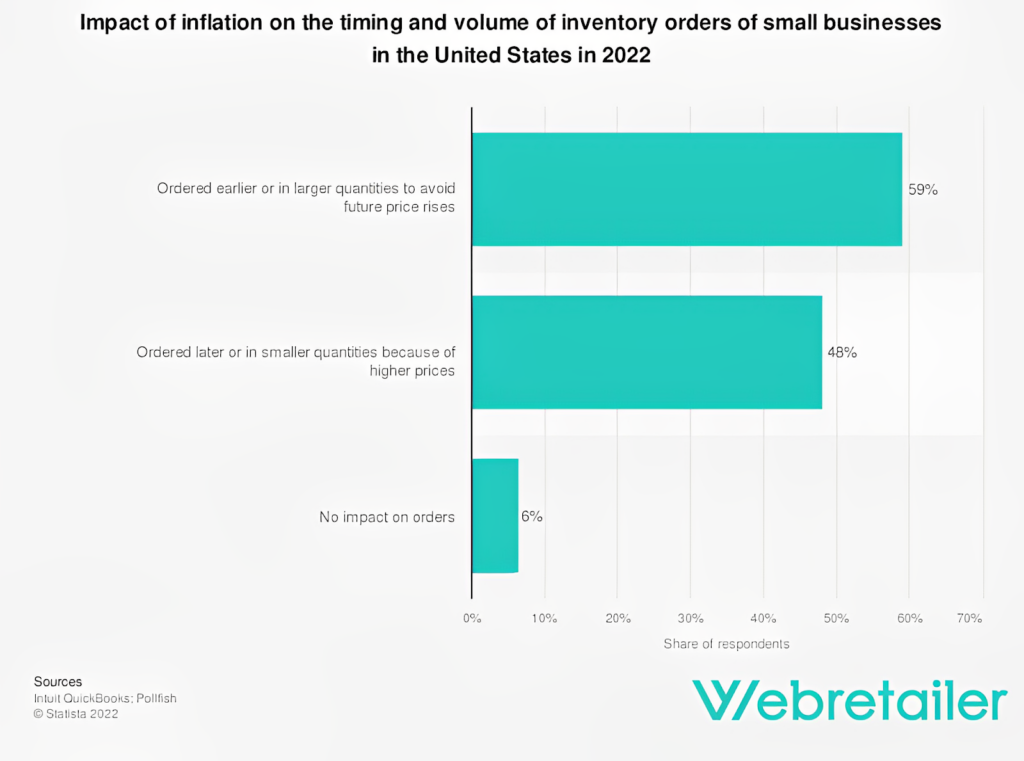Inventory Forecasting Top Tips and More News
Hey hey it’s Tuesday! But have you caught up with Friday’s crazy news yet? This week, we’re going to share something every online business owner needs — inventory forecasting tips. Knowing all the ins and outs, forecasting customer demand, and planning reorders should be at the top of your to-do list. So let’s get down to business with the right tips, solutions, and best practices!
Today’s news is 603 words and takes 2 ½ minutes to read.

Forecasting is a vital part of the business to ensure your company makes profit. Without proper analysis, your business could suffer losses by acquiring too much stock (or not enough of it).
For small businesses, inflation hit hard in 2022 and made a huge impact on the timing and volume of inventory orders. To avoid price rises, 59% of small businesses ordered large quantities of products. On the other hand, because of high prices, 48% of businesses ordered later or in reduced quantities.
Either way, inflation caused significant changes for forecasting. And that’s why it’s critical to have as much information as you can to analyze what’s coming for the future of your online business.
Inventory Forecasting Top Tips
Just a quick recap of what inventory forecasting is:
Inventory forecasting predicts future demand for a product or set of products based on historical data, market trends, and other factors.
Why is it significant?
Inventory forecasting estimates how much of a product a business owner can sell during a particular period of time. Thanks to that, a business can ensure that it has the right amount of inventory on hand to meet customer demand.
What will it do?
Good forecasting will:
- Save you money
- Keep the supply chain running smoothly
- Avoid underselling
- Avoid overselling
- Predict sales
- Optimize (everything)
- Help with logistics
How should you do it?
We have some amazing business forecasting tools here on Webretailer. Thanks to advanced algorithms, you’ll have the most accurate demand forecasting, inventory forecasting, financial forecasting, sales forecasting, and more.
And apart from tools? Well, you’ll need the following for sure:
- Check if you’re forecasting during the right time frame. Consider how your business is changing annually, quarterly, and monthly. Take into consideration all the big factors at play during each time period. Recently, factors like Covid, war, and inflation had major impacts on business analysis.
- Examine the initial level of demand during the specified time frame using the previous period’s sales figure as a reference point for the forecasting model. For instance, if the company achieved sales of 500 units in the preceding period, that would serve as the initial data point.
- Make assumptions based on trends. Will they increase or decrease your sales? Remember that you need to consider both trends that are already occurring and emerging ones.
- Prepare for the ‘what if?’s. We know you can’t prepare for everything, but making a list of the potential outcomes will prepare you more than not having a list at all.
- Collect quantitative and qualitative data. Quantitative data is the kind that involves statistical analysis, closed-ended questions, and numbers. Qualitative data is the one where you make observations, ask questions, and develop your own ideas.
Thanks to inventory forecasting, you can take your business to the next level. So don’t underestimate its power!
PS: Check out our article on market research tips. It won’t disappoint.
Also in the news
- Amazon workers announce new strike dates. Internet Retailing.
- Viva Wallet launches a pan-European payment solution. Fintech Finance News.

Leave a Reply